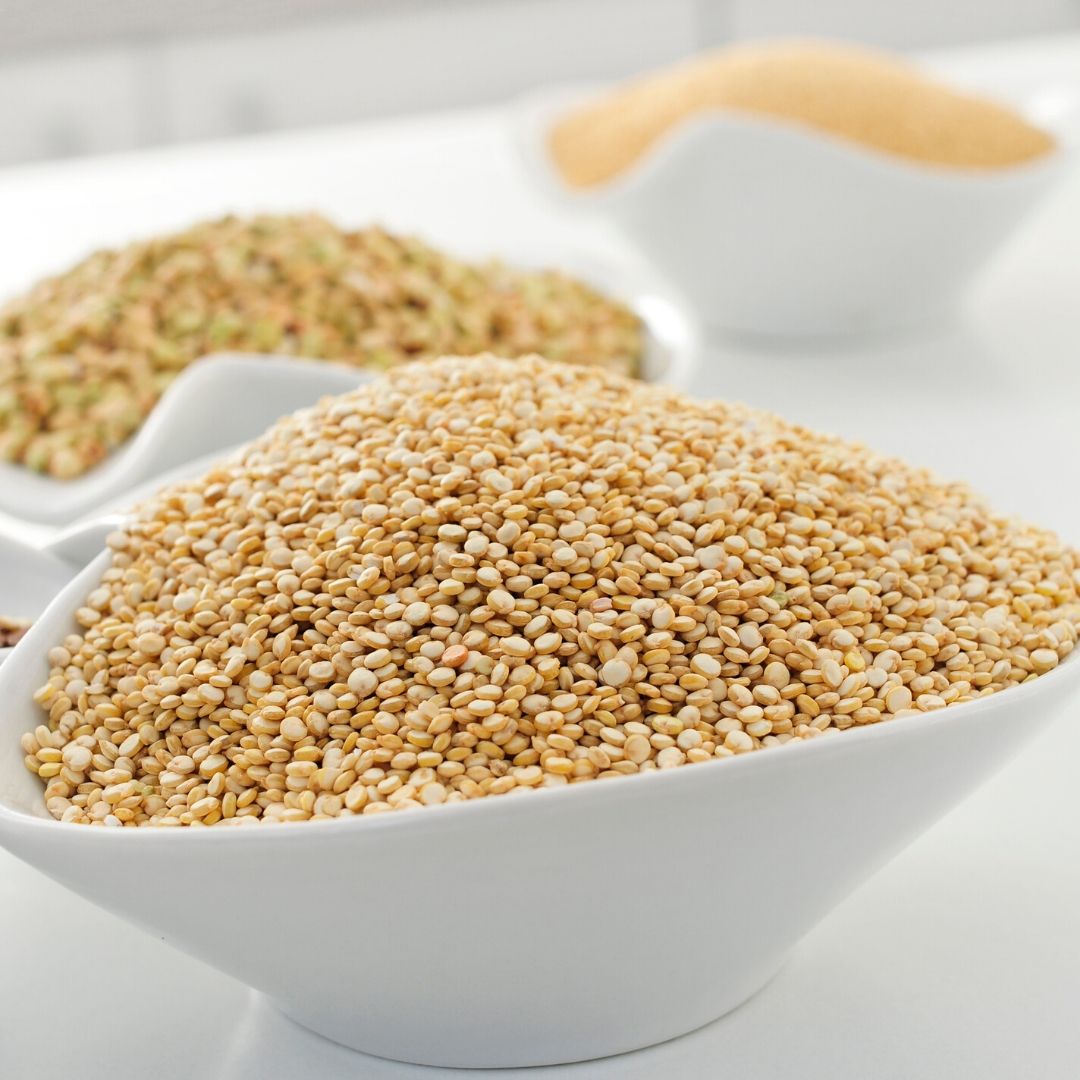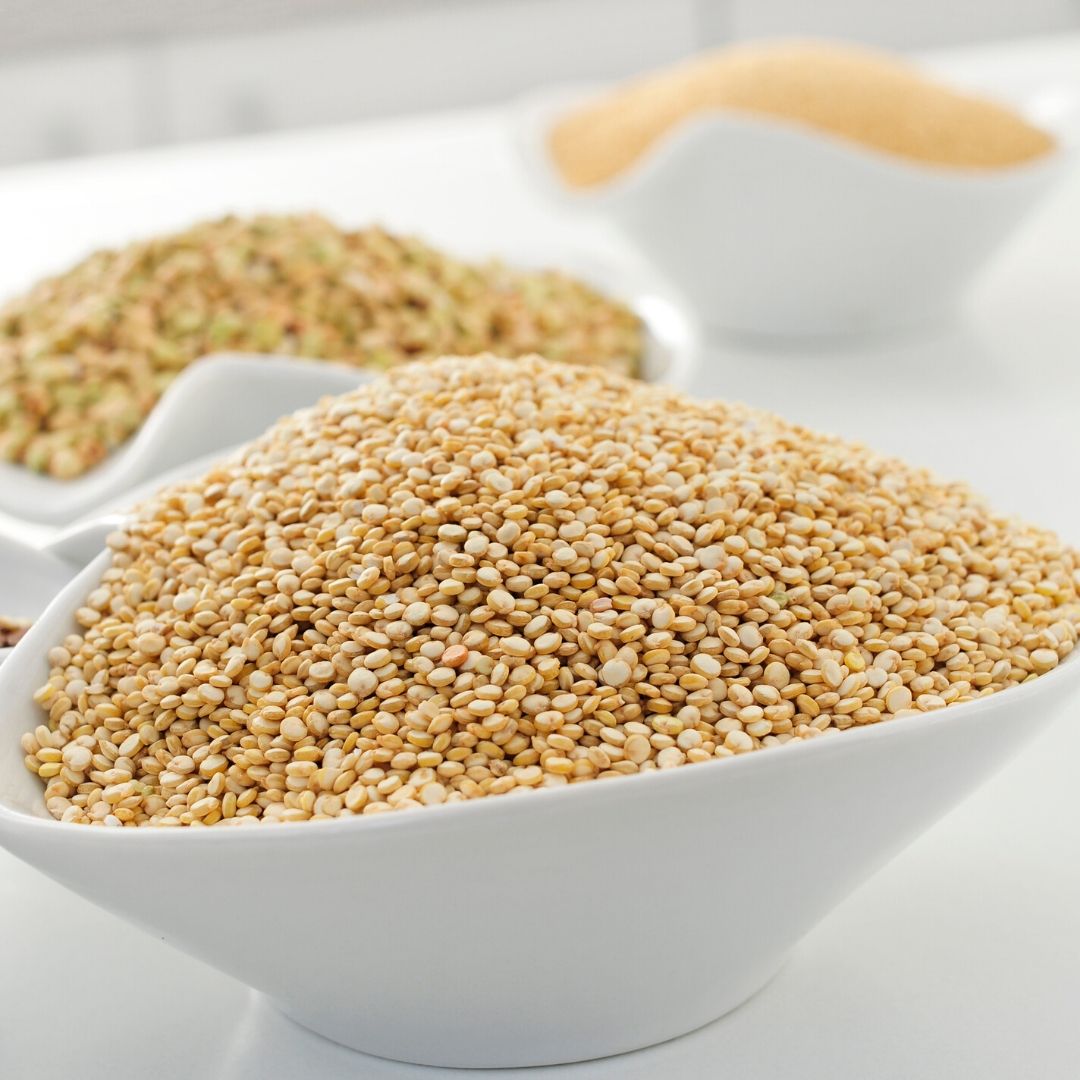
I love quinua. It is digestive, nutritious and easy to cook. But I have learned a few things about the way it is grown and sold globally. Do you want to learn more?
WHAT IS QUINUA?
Scientifically known as Chenopodium quinoa. Botanically, it is not considered a cereal grain, although it closely resembles millet nutritionally. “Quinua” or Quinoa has been a staple food in Latin American countries for several thousand years, especially in high areas such as the Bolivian-Peruvian “altiplano” (highlands) (Peru, Bolivia) but also in Ecuador, Chile and Argentina. Its name in Quechua language means “mother grain”. Just imagine how important it was (and still is) for indigenous people as food and medicine (e.g. the Incas used it in ceremonies and sacred medicines.
It is totally gluten free. It contains high biological value proteins as they contain the eight essential amino acids, which makes it a very popular food among athletes, because it improves their physical and mental performance. It is very rich in the amino acids lysine, histidine and arginine (very important for the development of the brain in childhood). Furthermore, it is highly digestive. It is relatively poor in fats (although it contains fatty acids such as omega 3, 6 and 9 and phytic acid). It contains a higher proportion of minerals than other grains (though it is not a grain as such), especially iron, calcium, phosphorus, and potassium. It is an excellent source of soluble fibre (7 gr. for every 100 gr.) so it helps prevent constipation and regulate sugar and cholesterol levels. As it is satiating it helps to lose weight. With regards to vitamins, it contains all the main ones: A, all those in group B, C, D, E, K and H. It has a large amount of flavonoids, but especially quercetin and kaempferol, plant substances which are highly antioxidant.
It is not a cereal grain, as it belongs to the Chenopodioideae subfamily (the same as amaranth).
Quinua is cooked in the same way as other cereals such as millet, amaranth, buckwheat or bulgur. So, you can combine them all as they all have similar cooking times. It combines very well with vegetables, it makes delicious croquettes, and you can also make it sweet for desserts. In the summer quinua can be used in salads as if it were rice.
“SAPONINS”, THE INVISIBLE ENEMY
It is very important to rinse your quinua thoroughly before cooking in order to get rid of saponins (from latin “sapo“=soap), which are naturally present bitter elements (which make quinua less enticing to animals, birds, insects and humans). Toxic or antinutrient substances are very common in plants. This makes perfect sense, if you think about it, as plants seek protection from predators. They don´t want to be eaten. You could call this a defence mechanism.
Saponins from quinoa and other plants are also known to have benefits:
- They help eliminate excess cholesterol.
- They neutralize free radicals.
- They help reduce inflammation and inhibit cancer cell growth.
However, it is also believed that saponins can damage the intestines and cause stomach problems, especially in people with previous pathologies or digestive problems.
However, saponins can easily be removed by rinsing the quinua (you will see foam coming out). So, just wash it several times and get rid of excess water. Problem solved!
THE ENERGETICS OF QUINUA
As we said in previous entries in this blog, nature manifests in two different trends. Firstly, expansively (e.g. green leaves and trees growing towards the sun, “powered” by the energy of the earth, which we call yin). And, secondly, contractively (e.g. roots growing downwards into the soil, “squeezed” under the influence of the magnetic forces of stars like our sun, which we call yang).
Thus, we can see that the quinoa plant is tall (up to three meters high) and with large leaves. Also, when cooked, it swells and puffs up. All these properties reveal more yin (= expansion) features. Likewise, its bitter taste also makes it a typical summer grain related to the fire element according to Traditional Chinese Medicine, which especially benefits its related organs, heart and small intestine.
LAST BUT NOT LEAST
Quinua has become extremely popular because it is healthy and an essential part of ancient cultural heritage. Nowadays it is so popular in western countries that it has become too expensive. Indigenous people of the Bolivian altiplano who used quinua as staple food can no longer afford it.
Fair trade guarantees producers decent wages, and yet, can local consumers in those countries afford the demand-inflated cost of quinoa for domestic consumption? Quinoa has recently been introduced as a crop in Spain, more specifically in Andalusia. It is not certified as “fair trade“, although it is organically grown. In your opinion, should we favour fair trade quinua even if shipped to us from miles away?
See you soon!







